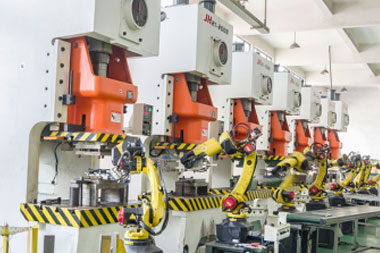Email: [email protected]
 2025.07.04
2025.07.04
 Industry News
Industry News

Research and development (R&D) is a crucial aspect of any welding machine factory. As welding technology continues to evolve, R&D plays a key role in ensuring that welding machines are efficient, reliable, and meet the ever-changing demands of industries.
Innovation in Welding Technology
In a welding machine factory, R&D is at the heart of innovation. With new materials, techniques, and industrial needs constantly emerging, it is essential for welding machine manufacturers to stay ahead of the curve. Research teams in welding machine factories are focused on exploring new welding technologies, such as advanced arc welding systems, robotic automation, and digital control mechanisms. These innovations help improve the precision, speed, and energy efficiency of welding machines, making them more effective for industrial applications.
By investing in R&D, welding machine factories are able to create products that offer better performance, reduce downtime, and meet the growing demands of modern manufacturing processes.
Improvement of Machine Durability and Reliability
One of the key focuses of R&D in a welding machine factory is improving the durability and reliability of welding machines. A welding machine needs to withstand high temperatures, intense pressure, and heavy usage in industrial environments. R&D helps identify and test new materials, components, and manufacturing techniques that can enhance the machine's lifespan and reduce maintenance requirements.
Customization to Meet Industry-Specific Needs
Different industries have different requirements when it comes to welding machines. Whether it's construction, automotive, shipbuilding, or aerospace, each sector demands machines that are tailored to its specific applications. Research and development in a welding machine factory enables manufacturers to design customized solutions that cater to these needs.
R&D teams collaborate with industry experts to understand the unique challenges faced by various sectors and develop machines that offer specialized features, such as variable welding speeds, specific power outputs, or advanced safety features. By doing so, welding machine factories ensure that their products are adaptable and meet the diverse needs of their customers.
Environmental and Safety Considerations
R&D also plays a significant role in improving the environmental impact and safety of welding machines. As industries and governments push for more eco-friendly manufacturing practices, welding machine factories invest in research to reduce the environmental footprint of their products. For example, R&D teams work on making welding machines more energy-efficient, reducing the emissions from welding processes, and developing machines that use less harmful materials.
Adapting to Market Trends and Customer Feedback
Finally, R&D helps welding machine factories adapt to changing market trends and customer feedback. As customer needs evolve, R&D teams gather insights and data to improve existing products or create new ones that align with market demands. This could include making welding machines more compact for portable use, developing digital interfaces for easy control, or integrating smart technology for more precise welding operations.
Research and development play a vital role in the success of a welding machine factory. From fostering innovation and improving durability to customizing products for different industries and enhancing safety, R&D ensures that welding machines remain efficient, reliable, and adaptable to changing market needs. As technology continues to advance, R&D will continue to be a driving force in shaping the future of welding machines, benefiting both manufacturers and end-users alike.